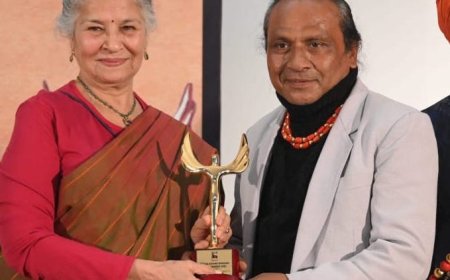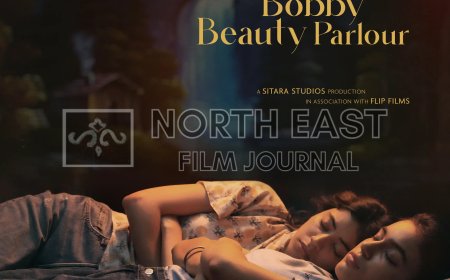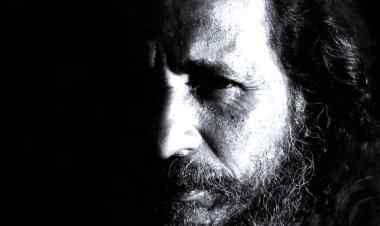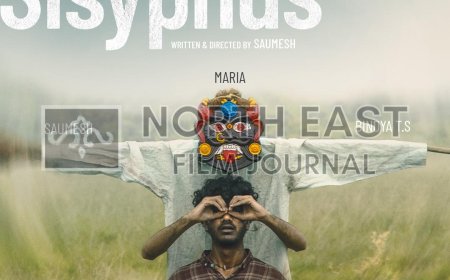An interview with Kachichinithu (The Boy With a Gun, 2020) filmmaker Khanjan Kishore Nath
Dipankar Sarkar interviews Khanjan Kishore Nath about his film 'Kachichinithu (The Boy With a Gun, 2020)
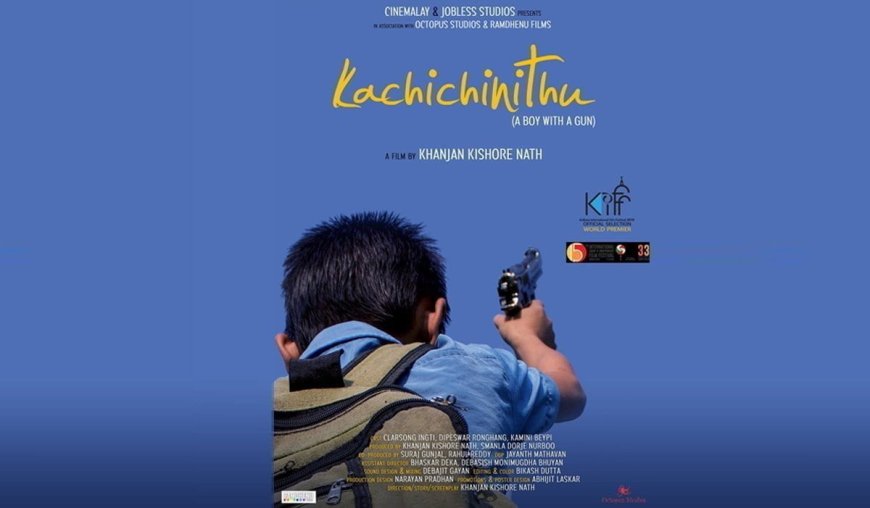
Kachichinithu (The Boy With a Gun, 2020), a short film by Khanjan Kishore Nath, is a tense drama featuring a boy from a Karbi community in Assam. As the title of the film implies, a young boy gains access to a gun and the plot revolves around his quest regarding power, identity, and the consequences of wielding such a weapon. The gun in this story symbolizes both the violence imposed by authorities upon this community and a representation of male dominance.
Kachichinithu has won the 68th National Film Award for 2020 as the best short film and is now available on YouTube.
In this interview, Nath spoke about growing up in a Karbi community, his collaboration with his technical team, and his life after winning the National Film Award.
How did you come across the idea for the film?
Probably in 2015, someone gave me a proposal to make a short film. After getting their proposal, I came up with this idea. In the initial stage, I thought to make this film in Assamese, but later on, I changed my mind and decided to make it in Karbi. Actually, I have been working on a full length Karbi script since 2006. That script was completed in 2017. So I thought that before making the Karbi language feature film, it's important to do some exercise with the language, location, customs, etc., so I made this short film as part of the exercise. As a filmmaker, I always carry my childhood memories with me. These are always there in my subconscious mind. Whatever I write or think, it's somehow related to my childhood. I spent my childhood in West Karbi, Anglong. There, I had seen the conflict between extremist groups and the Indian army. I have seen the violence from both parties and the reflection in society. So those memories are there in my mind. Kachichinithu is actually inspired by my childhood memories.
The film was made in the Karbi language; what preparation did you go through to adapt to their culture and bring authenticity to the story?
I was born in Baithalangso, a small hilly area situated in West Karbi Anglong. There I spent my childhood and my school life. In my surroundings, there were basically Karbi communities everywhere. So my upbringing was shaped by Karbi culture, customs, and language. So I didn't require much preparation to make this short. But yes, I took help from my elders for small details, dialogue translation, etc.
How did you and Jayanth Mathavan decide upon the film's visual design?
While we discussed the film before shooting, our main focus was to visualize the rawness of the theme with the conflict of the characters inside their minds with a suppressed colour tone. To get this, we decided to shoot in the rainy season. In the film, you will feel that wetness throughout the entire film. Jayanth Mathavan has also shot my debut featurefilm,m Ata Nirjon Duporiya (2024).
Tell us about the casting of the film.
Casting is a big challenge for every independent filmmaker. If you do the right casting for your characters, then half of the film is done. In our film, the child character Longsing is the main protagonist. It's hard to get a child actor for a Karbi film. I visited many schools nearby in Baithalangso but didn't get any. Then I saw that kid, Clarsong Senar, at my friend's house. Clarsong used to stay there for his studies. Once I saw him, it immediately clicked in my mind that he was the right choice for the character. Then I started talking to him and gradually molded him into this character. The other two characters in my film were picked up from the village itself. Sometimes it becomes easy to work with non professional actors because they are ready to mold themselves. I am lucky enough that these non professional actors gave life to my characters in the film.
What was your brief to Debajit Gayan regarding the sound design for the film?
The truth is that there was no budget for location sound during that time. So I decided to fix the sound part of the post. Once editing was over, I approached Debajit Gayan and told him how much sound was important for this film because there was no background music. He quickly picked up my thoughts, and within a short period, he came up with a brilliant sound design.
Why have you concluded the film with an open ending?
I always prefer an open ended film. I believe it gives space to the viewers to think from their perspective. In this film, there might be hundreds of different endings. As a filmmaker, I don't even know what the perfect ending will be for this film. And if I give a definite ending to this film, then it will be an injustice to this film. I think this open ending encourages viewers to think beyond the film.
Did the film change during the editing?
Filmmaking is a continuous development process. It can be changed at any stage of the making process. In this film, there are not many changes because I have a very concrete script with me. So my editor basically followed the script line.
Kachichinithu won the 68th National Film Award for 2020 as the best short film. How did the recognition help you as a filmmaker?
Winning a national award is like a surreal feeling for me. After getting this award, my immediate thought was, "Okay, I will get a producer for my film now." But it doesn't happen that way. I am still struggling to gather funds for my next film. This award gave me recognition or an honour. But it doesn't change my struggle to make films.
*****
What's Your Reaction?





































